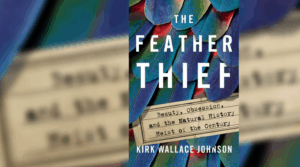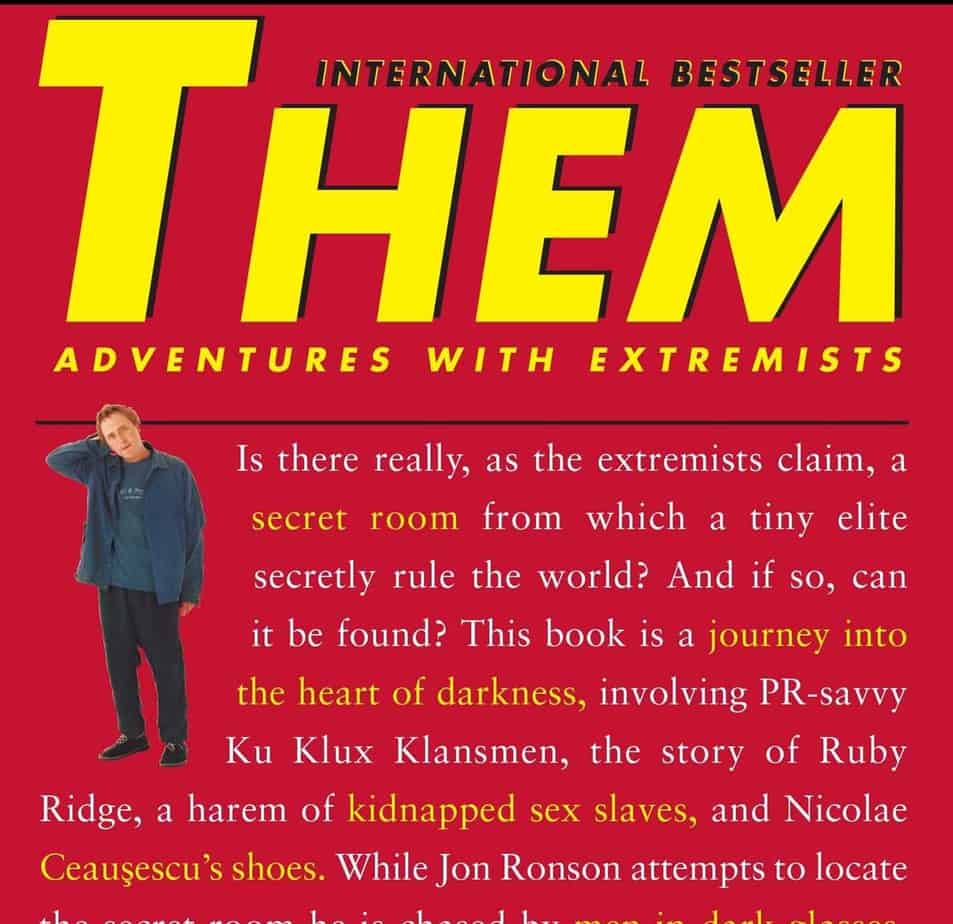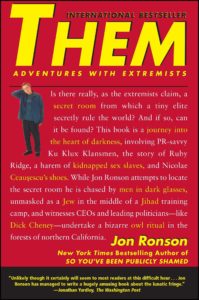Tag Archives:from the library

30
AprHeists: Feathers, Maps and Works of Art
 Our library closed in mid-March due to COVID-19 but our librarians are still writing weekly columns for the Transcript. We directed our focus on writing about library services beyond the walls of the library building. In this unfamiliar, unprecedented time, we are reinventing our professional lives by working from home. We are committed to teaching our non-library users to sign up for a library card online.
Our library closed in mid-March due to COVID-19 but our librarians are still writing weekly columns for the Transcript. We directed our focus on writing about library services beyond the walls of the library building. In this unfamiliar, unprecedented time, we are reinventing our professional lives by working from home. We are committed to teaching our non-library users to sign up for a library card online.
We’ve shared our news about the Chat with Us box on our website that is staffed from 9 a.m.-5 p.m. on weekdays. (After-hours chats are addressed directly to our adult services librarian’s email where they are responded to the next morning.) We are expanding our services with more robust 24/7 WiFi available in the parking lot. We are offering online book discussions, children’s storytimes and other innovative programs by way of Zoom, YouTube or Facebook Live.
In addition, we are focusing on the library’s digital collection — books, audiobooks, movies, magazines and music available through our digital services — OverDrive (and the Libby app), Hoopla, Kanopy, Flipster and our newest offering, RB Digital.
If you appreciate nonfiction crime and intrigue, I have three excellent suggestions for you that are available as OverDrive Advantage ebooks — digital copies that are shared only with Norwood cardholders. You won’t have to wait in line with other Massachusetts library users outside of Norwood to check them out.
Two years ago, in the winter of 2018, I attended the American Library Association MidWinter Meeting in Denver, Colorado. As usual, I registered for a morning session of Penguin-Random House book talks. At these events for librarians, we are offered a selection ARCs (otherwise known as advanced reading copies, pre-press copies or galleys.) These pre-publication copies are incomplete in that they need a final proofread and sometimes a final cover design. Reviewers are always given copies of ARCs — especially those who will write comments that will appear on the back of the final book. Publishers do, however, always want to get books into the hands of librarians who are going to suggest books to readers. They are hoping that we read them with a great recommendation.
Flying to and from conferences with minimal baggage doesn’t permit me to bring home much complimentary swag, especially books. But that morning, I jockeyed my way around the publisher’s ARC table eager to grab a copy of The Feather Thief by Kirk Wallace Johnson. The title fascinated me and the subtitle even more: “Beauty, Obsession, and the Natural History Heist of the Century.” The bright cover with a plethora of blue, green, purple and red feathers added to the book’s charm. I tucked it, and a few others from various other publishing events, into my suitcase to bring home.
Fast forward to the winter of 2020. I’d acquired a final copy of The Feather Thief for the library that spring, but I never seemed to find the time to read my own advanced reading copy. One day this past February, I happened to listen to an encore episode of This American Life that initially aired two years ago in February 2018. I sat in my car listening closely. You may recognize these so-called “Driveway Moments:” the times when you sit mesmerized by the topic or the speaker. Host Sean Cole, sitting in for Ira Glass, interviewed author Kirk Wallace Johnson.
Enchanted with the story, I realized that my copy of The Feather Thief sat unread on my bookshelves. I immediately searched for it, cracked it open and began to read the sometimes crazy, always tragic, story of a heist of prized and invaluable bird feathers. Author Kirk Wallace Johnson stumbled upon the story of this feather heist while he was fly-fishing in New Mexico.
As a young man he graduated from the University of Chicago and went on the serve in Iraq, where he coordinated reconstruction efforts in Fallujah. The son of parents well-versed in government service (his father served several terms as Illinois state representative and senator; his mother was a policy advisor), Johnson felt obligated to serve humanitarian efforts in Iraq. His first book, To Be a Friend is Fatal: The Fight to Save the Iraqis America Left Behind (2013) is the account of how he managed to help thousands of Iraqis (Iraqi nationals assisting the U.S. in Iraq) resettle in the U.S.
Following a highly stressful decade, and the publication of his first book and subsequent author tour, Johnson was de-stressing and fly fishing when an exotic salmon fly in his fishing guide’s tackle box caught his eye. Studying the brilliant colors and silver thread that intricately tied them together, Johnson’s guide explained the beautiful fly. He assured Johnson that he would also be intrigued by the story of Edwin Rist, a notorious feather thief.
Rist was a young American flautist who was studying with London’s Royal Academy of Music in 2009, not far from the village of Tring. An outpost of the British Museum of Natural History in Tring had a collection of rare bird skins and feathers, among them the priceless 150-year old collections of naturalists Charles Darwin and Alfred Russel Wallace. One night in June 2009, 21-year old Edwin Rist succeeded in breaking effortlessly into the museum, packing his suitcase with beautiful bird skins and feathers and taking off into the night.
Amazingly, the theft went undetected until the next day when Rist was long gone back to London. Hundreds of bird skins (the epidermis of a bird complete with feathers) of Red-ruffed Fruitcrow, Spangled Cotinga, Resplendent Quetzals and Birds of Paradise had simply disappeared from the drawers that had held them safe for decades.
Listening to his guide’s story, author Johnson was hooked. He spent the next five years researching, hunting and investigating the heist and the thief, Edwin Rist. The resulting story in The Feather Thief is captivating — teeming with natural history, ornithology, child psychology, hobbyist obsession, the intricacies of fly-tying and even women’s hat fashion in the early 20th century.
Rist was eventually found out, but many of the beautiful specimens were never found. Two other digital books of thievery that you can check out with your library card are The Map Thief (Michael Blanding, 2014) and The Gardner Heist (Ulrich Boser, 2008). The Map Thief is the story of E. Forbes Smiley III, an erudite and proper map dealer turned thief. Smiley visited libraries where he was a trusted authority. Undetected, Smiley slipped maps from books, sometimes cutting them out with an Exacto knife. He pleaded guilty in 2006 to stealing the missing maps.
Like the feathers, though, many of the maps have never been recovered.
The Gardner Heist is another captivating narrative of intrigue and possibly obsession. Unlike the Rist and Smiley, the stolen Gardner Museum art has never surfaced and the mystery has never been solved.
Please chat with a librarian on our website if you need help registering for an online library card and introduce yourself to our OverDrive collection and the Libby app, to check out these digital books.
Charlotte Canelli is the library director at Morrill Memorial Library. Look for her article in the April 30, 2020 issue of the Transcript and Bulletin.

25
AprGrowing in a Fallow Time
 The wisdom limned in the biblical book of Ecclesiastes – “To everything there is a season and a time for every purpose under heaven” – is common enough to be known outside of religious circles. Through the thousands of years that mankind has been engaged in agriculture, we understand that there is a time when we plant seeds, a time to harvest, and even a time when the ground is resting, fallow.
The wisdom limned in the biblical book of Ecclesiastes – “To everything there is a season and a time for every purpose under heaven” – is common enough to be known outside of religious circles. Through the thousands of years that mankind has been engaged in agriculture, we understand that there is a time when we plant seeds, a time to harvest, and even a time when the ground is resting, fallow.
Nobody I know put the precept of a time for every purpose into practice more than my mother. She was a science teacher and was deeply dedicated to the job. During the school year she would often follow a full day of classes by offering after-school help, then grade homework, tests and lab reports in the evenings. Yet she was also an outdoor person at heart who delighted in summer breaks when she could work in the yard, cultivating her own wonderland of florae. On rainy days when we were stuck indoors she made good use of her time, bustling around the house and getting chores done. All the while she’d cast glances out the window, waiting for her chance to resume playing in the dirt. If just one fraction of the gloom lifted, she would take notice of it and utter a favorite and oft-used phrase: “Looks like it’s brightening up out there.” This habit said a lot about her. She was the type of person perpetually waiting for things to get better so that she could celebrate that circumstance and share it with others.
While I haven’t yet achieved my mother’s level of optimism or productivity I keep after it, even now. The midst of a pandemic might seem like a counterintuitive time to look on the bright side. We’re isolating ourselves from others, donning masks and gloves to go to the market, wondering about the availability of basic supplies like toilet paper and holding our collective breath to see just how bad the repercussions of COVID-19 will be. There is a lot to endure. Yet focusing time and energy on the negative aspects of our current situation doesn’t help. So why not put this seemingly fallow time to use? In a world that’s been turned upside down, couldn’t we also turn on its head the notion that seasons of growth and stillness are separate? We might feel limited right now, but it could also be viewed as a time of opportunity.
For my part, I’m trying to balance some of the adversity of this time with positive changes. Working from home has been a challenge, complete with mastering new technology to tackle tasks remotely while we try to create a virtual library to tide people over. Yet it has also imparted new insight about workflow processes, and encouraged me to explore online resources and learning opportunities that I hope will increase the knowledge I have to offer patrons. With the closure of nonessential businesses in March I realized how much time I wasted browsing, but not buying, in stores. Instead of taking that bad habit online, I’m using the time to chip away at projects on my to-do list. During this imposed renaissance of home-cooked meals, and in spite of the extra work and dishes, I’m reminded how much I like cooking and baking. It has been like encountering an old friend and having such fun you’re not sure why you fell out of touch. On the topic of reconnecting, I’m meeting weekly for a video chat with a group of college friends scattered from LA to the UK; I’ve also spent hours on the phone with loved ones. Daily walks help keep my spirits up and my weight down. I don’t know that these habits will survive our return to normality, but I hope so. They’re serving me well.
While we are stuck at home, I’m not saying there’s anything wrong with binge-watching a few worthy shows. I’ve dabbled in a bit of that, myself. Yet there’s only so much TV I can watch. I also understand that a lot of people are pressed for time, working from home while parenting kids out of school, and are more likely to be looking for a nap than a self-improvement project. They might be better served by the short but sweet task of practicing gratitude. Why not take a minute to notice the things, however small, that make you happy – and then be grateful for them? I am no longer surprised to find that every day I’m thankful for something. In a time of huge uncertainty, it’s funny how tiny joys have taken on a magnified importance for me. I try to relish those moments I feel positive; they help offset the inevitable dismay brought on by the news. Much of my recent happiness is related to the weather, partly because of its impact on my daily walks. I’m grateful for a bright sunny day when I can walk the quiet streets around my house listening to the cheerful chatter of birds, and for feeling not so alone when I exchange waves and greetings with fellow walkers even as we cross the street away from each other to comply with distancing. If the day is dreary (and many of them have been) I cast frequent glances out the window watching the sky for signs of improvement, for the slightest lifting of gloom so that I, too, can observe, “It looks like it’s brightening up out there.”
Those interested in virtual resources for personal growth or entertainment will be delighted to hear that the library is launching a new suite of digital content including Acorn (British Film & TV), Learn it Live and The Great Courses. Among many others, The Great Courses features subjects such as baking, cooking, yoga, tai chi, mindfulness, birding, and even dog training. Visit the library website and check them out!
Kirstie David is the Literacy/Outreach Librarian at the Morrill Memorial Library in Norwood, Massachusetts. Look for her article in the April 23, 2020 issue of the Transcript and Bulletin.

16
AprStranger Than Fiction
 When I was going to college, I worked part time in an independent bookstore. I loved being surrounded by books and meeting interesting people (like my future husband), and most of my paycheck went right back into the store. At the time, I was really only interested in reading fiction. I spent most of my money on fantasy novels – anything by Alice Hoffman, classics I never read in school, young adult books, things suggested by customers, and more. I bought graphic novels, and huge art books (that I didn’t always read), poring over the images with appreciation. With a 35% discount, I felt like I needed to take advantage and stock up.
When I was going to college, I worked part time in an independent bookstore. I loved being surrounded by books and meeting interesting people (like my future husband), and most of my paycheck went right back into the store. At the time, I was really only interested in reading fiction. I spent most of my money on fantasy novels – anything by Alice Hoffman, classics I never read in school, young adult books, things suggested by customers, and more. I bought graphic novels, and huge art books (that I didn’t always read), poring over the images with appreciation. With a 35% discount, I felt like I needed to take advantage and stock up.
At the time, nonfiction seemed boring. It reminded me of a school assignment. But one day when I was shelving books, a book cover caught my eye.
Them by Jon Ronson, was a pretty unassuming book. The cover was red, with lots of text, and a picture of a guy who looked uncomfortable, his posture apologizing that we even had to look at him. I must have looked at it in passing ten times before I finally picked it up. What about this book was getting to me? Obviously the red cover stood out, but lots of books have bright colors and more interesting illustrations. I finally took the time to read the full title and blurb – Them: Adventures with Extremists, “a story of an investigative reporter who tries to follow up on the claims made by various extremist and conspiracy groups that there is an elite, secret group who really runs the world, known as the Bilderberg Group.” I looked at this nerdy, self conscious guy who was apparently brave enough to meet with some strange and dangerous people, and I was intrigued. Who was this guy? What did he find? I had to make an exception from my usual purchases and find out.
Instead of slogging through the book like required reading, I found it more fascinating than fiction. How could this stuff be real?! I was in my early twenties, and though I knew generally about conspiracy theories around the moon landing being fake and others, I hadn’t yet discovered the true scope of strange ideas out there. Ronson meets with David Icke, a former English football/soccer player, who travels the world lecturing on his findings that many world leaders are actually lizard people in disguise. He talks with people from militias, religious radical groups, and American white supremacists, who all believe that there is a group of powerful men who are pulling the strings to affect world events.
Ronson doesn’t make these people out to be cartoonish villains. He tries to take them at their word to start off with, sincerely following them down various rabbit holes. Ok, Ronson implies, if there is this group of global elites running the world, then who are they? What do they want? Where do they meet? He asks for leads and evidence, and then sets out to see what he can find. Remarkably, he does end up at some private, exclusive meetings attended by some of the Bilderberg Group. Are these people really the masterminds that those groups believe them to be?
Part of Ronson’s empathic charm is his ability to find humanity in everyone, while also admitting when he thinks they are totally full of it. He is not a Hunter S. Thompson, gonzo style reporter with little to no fear. He fully admits his panic attacks and nervousness when interviewing his subjects, particularly antisemitic racists who believe in a plot for world domination by Jews, all the more troubling for Ronson, as he is Jewish himself. His anxiety and apprehension about this and other prejudiced canards are palpable in his writing.
I have become a fan of his, and have read most of his other works throughout the years. You may have heard of The Men Who Stare At Goats, another investigative piece about the US military using psychic warfare, that was turned into a movie with George Clooney and Ewan McGregor. The Psychopath Test is a book that looks into the idea of psychopathy, in particular who decides what a psychopath is, how do they do it, and how should society handle these individuals? So You’ve Been Publicly Shamed is about online shaming and bullying, and Ronson has other books that are collections of his articles from various publications.
At this point, deep dives into the stranger parts of human thought and subculture are certainly not the only kind of nonfiction books I read, but Them: Adventures with Extremists, was one of the first books that made realize reading about things that really happened can be just as interesting as, or stranger than fiction. Jon Ronson helped me see that.
Nicole Guerra-Coon is the Assistant Children’s Librarian at the Morrill Memorial Library in Norwood MA. Look for her article in the April 16, 2020 issue of the Transcript and Bulletin.

10
AprBooks, Take Me Away!

When this article is published, I will have completed nearly 4 weeks of staying at home during the COVID-19 global pandemic, all while working and parenting full-time. This time hasn’t been easy for anyone. These rapid changes in the way we live, while necessary, have left so many of us anxious, lonely, and pretty claustrophobic. I think I truly understand the sentiment of that old commercial where the overwhelmed woman cries out, “Calgon, take me away!”
In addition to all the concerning news, so many of us have been transitioning to working from home. While the library is closed to the public, the staff are doing our best to provide virtual services and programs for Norwood residents. Reference librarians are currently answering questions via the new RefChat feature on our website. Located on the lower right corner of the library’s website, this new service allows our patrons to connect with librarians to ask questions virtually while the library is closed. RefChat is live Monday through Friday from 9:00 AM to 5:00 PM. If you use RefChat during off-hours, don’t worry! An email will be sent to our librarians who will reply back to you.
Reading has been one of my main coping strategies during this time of upheaval. I’ve been using my Kindle and scouring the library’s Overdrive and Hoopla apps to find ebooks I can escape to before I go to bed, and audiobooks I can listen to while typing away on my home computer. Recently, the library has increased the number of items patrons may check out in Hoopla to 20 titles. Hoopla is a streaming service with ebooks, digital audiobooks, digital graphic novels, movies, and music available for Norwood residents with their Minuteman Library Network card, while Overdrive is a service that allows users to check out ebooks and audiobooks like regular books on our shelves.
For me, this is not the time for gritty realistic fiction or grim murder mysteries. This is a time for escapism. Fantasy and humorous writing are my preferred genres to transport myself somewhere else from the comfort (confinement?) of my home or transform my mood when I need a pick-me-up. I recently finished New York Times bestseller Sarah J. Maas’ House of Earth and Blood, a contemporary fantasy that incorporates magic, danger and hot romance into one rollicking read. Main character Bryce Quinlan is a half-human, half-Fae seller of rare antiques who gets drawn into the Crescent City’s underworld to solve the murder of her best friend. The plot races along and requires readers to suspend a lot of disbelief, but the magical setting and characters are so enjoyable that readers forgive some of the quirks of Maas’s writing style.
Vita Nostra, a Ukranian import by Marina and Sergei Dyachenko and recently translated into English, is often described as a dark, Russian version of Harry Potter. While this story does feature a young woman who attends a special school and discovers she has extraordinary abilities, the similarities end there. Sasha Samokhina meets the mysterious Farit Kozhenikov, the man in sunglasses who demands she perform strange tasks for gold coins. Sasha finds out she’s been accepted to the Institute of Special Technology, an unknown school in a backwater town where the lessons are obscure, the books can’t be read, and teachers punish students for the lack of effort by threatening their families with physical harm. Sasha figures out how to survive in this bizarre environment while excelling at her schoolwork. In the end, readers are left wondering if Sasha’s abilities are only magical or can actually re-shape the foundations of reality. This is fantasy for readers who need a change of pace from predictable genre tropes and are willing to power through Russian names and a complex, thoughtful plot.
If fantasy isn’t your thing and being stuck inside with family is starting to get to you, perhaps stories featuring dark humor will get you through staying at home. No one loves to poke fun at his family more than the irreverent David Sedaris and Dress Your Family in Corduroy and Denim is a collection of hilarious stories featuring his dysfunctional siblings and parents. Nothing remarkable usually happens during the course of his stories but his observations about his family members’ charms and imperfections are always funny but painfully relatable. Even if you are not an audiobook person, listening to Sedaris read his own work is a treat that should not be missed.
Where’d You Go Bernadette by Maria Semple is a short, absurdist take on suburban upper middle class America and what happens to a woman when she gives up one dream for another. On the surface, Bernadette seems like a typical stay-at-home helicopter mom. She obsesses over her brilliant daughter, shuttles her from activity to activity and holds down the fort while her husband works for Microsoft. Except Bernadette has never recovered from tragedies in her past and is practically agoraphobic. She secretly loathes her life in suburban Seattle and eventually escapes after a PTA disaster. Her family has to follow her clues to find out what happened to Bernadette, past and present.
Books allow you to travel without leaving your home. If you would like to use the library’s online resources but don’t have a library card, you can fill out this application for an e-card and get instant access. The library is also facilitating the Together, Apart book group, an online book group where people can join a Zoom meeting to discuss the books they love and what they are reading. In a time when we must isolate ourselves to protect ourselves and others, we still can go beyond our four walls and connect with each other through books.
Kate Tigue is the Head of Youth Services at the Morrill Memorial Library in Norwood, MA. Look for her article in the April 9, 2020 issue of the Transcript and Bulletin.

2
AprYour Library: Still Open for Business – Virtually
 Although we may be reminded lately of the dystopian novel, The Stand by Stephen King, the world has been here before. The 1918 H1N1 flu pandemic (also called the Spanish flu) was the deadliest epidemic of the 20th Century. It spread worldwide during 1918-1919 and was ameliorated by World War I and the crowded conditions in the trenches on the battlefields of the Western Front. “The virus traveled with military personnel from camp to camp.”[i] In addition, returning soldiers brought the epidemic across the Atlantic. More American military personnel died of influenza and pneumonia during the war than they did from the enemies’ weapons.
Although we may be reminded lately of the dystopian novel, The Stand by Stephen King, the world has been here before. The 1918 H1N1 flu pandemic (also called the Spanish flu) was the deadliest epidemic of the 20th Century. It spread worldwide during 1918-1919 and was ameliorated by World War I and the crowded conditions in the trenches on the battlefields of the Western Front. “The virus traveled with military personnel from camp to camp.”[i] In addition, returning soldiers brought the epidemic across the Atlantic. More American military personnel died of influenza and pneumonia during the war than they did from the enemies’ weapons.
One-third of the world’s population (or 500 million people) were infected with this virus. 50 – 60 million people died across the globe. 675,000 of those occurred in the United States. Norwood’s own historian, Patricia Fanning, wrote about Norwood’s involvement during the pandemic (see From the Library Column Influenza and Inequality, September 13, 2018). Over 100 of the 12,000 citizens of Norwood perished from that flu.
To put this into perspective, the U.S. population in 1918 was about 103.3 million people. 6.5% of the population died in the United States. The population now is more than three times higher.
During the pandemic of 1918, the Board of Library Trustees wrote in the 1918 Town of Norwood Annual Report that the total circulation (books checked out) for the year was down by over 5,000 items. “The decrease … due to the war work activities and also the closing down of the circulation department of the library during the severe influenza epidemic.” Due to the war, the hours of the Library after January 13 were 12:30 pm – 8:00 pm. To conserve fuel and electricity, there were no Sunday hours, as well.
Regular hours resumed in December after World War I had ended on November 11, 1918.
As many library users in Norwood know, our library closed to the public on Sunday, March 13, due to the Covid-19, a virus that causes a respiratory infection, sometimes deadly. Library staff members were sent home – and expected to work from their homes, while minimal staff took care of technology and network issues. Very quickly, library staff began manning a chat-with-a-librarian feature prominent on our website. Reference and other professional librarians became available for instant answers to questions from 9-5 every day that week. (On off hours, the Chat application sends an email to staff who answer those questions as soon as they can.)
Delivery between all Massachusetts libraries ended on Monday of that week, and on Thursday and Friday, a staff of no more than six people telephoned or emailed library users who had books waiting on the hold shelf. A curbside delivery service was implemented for those two days, according to Norwood’s Public Health Department guidelines. 175 users were contacted, and 94 of them received their items – 308 in total.
Upon Governor Baker’s stay-at-home order given on Monday, March 23, all library staff have been at home communicating online through Zoom, on phones, text, and email. Programming librarians quickly began presenting both children’s and adult events – StoryTime with our children’s staff – Miss Kate Tigue, Miss Nicole Coon, and Miss Dina Delic on Facebook Live at 12:30 pm in the afternoon. Liz Reed, Adult Services librarian, held the first Craft Connection, and Patty Bailey, the library’s book discussion leader, held the monthly Turn-the-Page event in the evening. Both events were held on Zoom, a free remote conferencing service that combines video conferencing, online meetings, chat, and mobile collaboration. Nancy Ling, Outreach Librarian and author, and Kate Tigue, Children’s Services Librarian, conducted a Google Meet split-screen interview. A Together-Apart book discussion was held on Thursday night, March 26 and it was a huge success. Many more programs are being developed as I write this.
Library staff began Zoom conferencing each evening, to coordinate programs, solve problems and share ideas. In between meetings, group texts have provided instant communication and feedback.
Unlike 1918, libraries are more equipped than ever to provide free digital services to library users. While we have had digital audiobooks since 2005, and digital eBooks, movies, and music since 2010, we have been investing in both the media AND staff training since that time.
Libraries in the Minuteman Library Network have been investing nearly a million dollars a year in the OverDrive platform, also known as the Libby application. More and more readers have found reading and listening on their personal devices (tablets and phones) for the past decade. All OverDrive books and audiobooks are easily accessible through the Minuteman Library catalog. In addition, there are many titles of popular magazines available for download.
The Morrill Memorial Library has been offering magazines on the Flipster app for the past few years and adding more and more titles. Flipster is a user-friendly app – magazines appear much like they do in the paper version, flipping through the actual pages. The Atlantic, Oprah, Kiplinger’s Personal Finance, Men’s Health, G.Q., Real Simple, and Bon Appetit are a few of the many free titles available.
Hoopla provides Norwood residents free and easy access to stream and temporarily download thousands of movies, T.V. shows, music albums, audiobooks, e-books, and comics. Kanopy is an online streaming service, much like Netflix or Hulu. It provides access to excellent movies (many from the Criterion Collection), independent films, foreign language content, and award-winning documentaries.
Of course, in addition to all of the terrific streaming and downloadable options, library users still have all of our database resources that have always been available from home – Britannica, Boston Globe, the Chilton Library, NewsBank – America’s Newspapers, Heritage Quest Online, and Mango Languages.
If you need a library card to access all of these tremendous digital library collections, you can quickly sign up online on our website. Check the How Do I? drop-down menu for Library Cards. As soon as you are registered, the library will open your world to a wealth of possibilities during this time at home. And make sure you click on the link to chat with a librarian – he or she will attempt to solve any problem you encounter.
[i] The U.S. Military and the Influenza Pandemic of 1918-1919. PMC (Pub Med Central), Carol R. Byerly, PhD. Public Health Report, 125. 2010.
Charlotte Canelli is the Director of the Morrill Memorial Library in Norwood, MA. Look for her article in the April 2, 2o20 issue of the Transcript and Bulletin.
